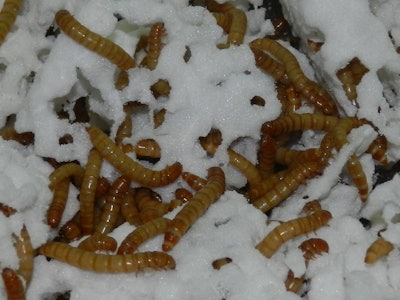
Real sustainability is coming. It came to my attention a research project of the use of the worm Tenebrio molitor − the larvae phase of a coleopteran − to digest polystyrene. This compound is transformed by these worms into organic matter, both for the worm itself and as debris. It has more than 50% protein and can be used, among other things as animal feed!
This project is being developed by young researchers at the National University of Mexico (UNAM), the Monterrey Tech (ITESM) and the Technical College of the Valley of Mexico. Diego Tonatiuh Hernández is the leader of the project and says that polystyrene takes 800 years to biodegrade, while it will only take 48 hours with Tenebrio molitor.
The project has already been awarded with the Santander X prize, Lance category in Mexico. This category is for projects that are in a validation phase for market launch, with an initiative that seeks to provide a solution to a business problem that has not been fully resolved yet and that could contribute to economic development and have a positive impact on the population.
Personally, I think the mere idea of developing this is marvelous, but also the resulting products seem spectacular. I have always been against polystyrene. In Mexico, polystyrene abounds in so many things − besides packaging material − such as dishes and cups for street food and parties. It is a real plague that could be there for 800 years. But now, it may not.
It seems that using these worms is a great solution from the environmental point of view but also from the feeding perspective. I am not sure if it will replace much of the protein sources we use to feed animals now, but it will certainly replace part of it, bringing animal production closer and closer to sustainability. Let us remember that insect protein is coming. Europe has approved it for animal use. And many cultures eat insects, including Mexicans.
There is so much idle talk about how bad animal production is in terms of greenhouse gases and pollution. It is good to see developing solutions.
What do you think?


















